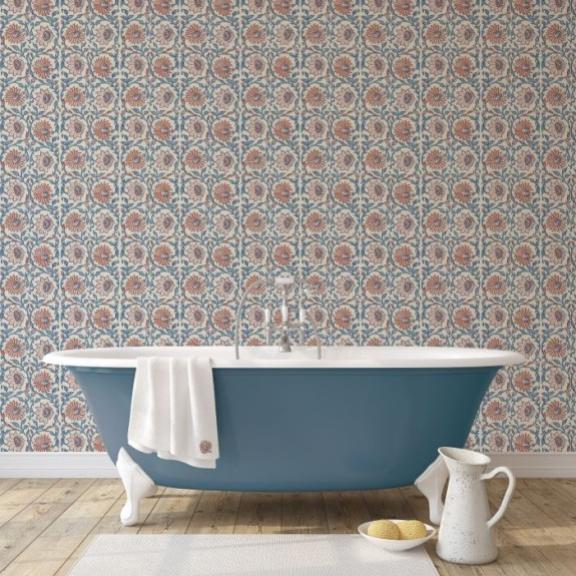Limited company vs sole trader: which is best for interior designers?
Should you launch an interior design practice as a sole trader or set up a limited company? Here’s the lowdown on both routes
When you’re starting out, the question of whether you should run your interior design practice as a sole trader, or set up a limited company, is one of the first you are likely to address. Compare the two options and you’ll see that starting up as a sole trader is straightforward, while launching a company is more complex because of the formation process you have to go through. Moreover, running a company brings with it more legal responsibilities.
Why set up as a sole trader?
As a sole trader, you run your practice as an individual, and you are self-employed. After tax, the profits of the business are yours. Becoming a sole trader is simpler than launching a company. You just need to register for self assessment via the government’s website.
You can trade under your own name, or choose another name for your business but, of course, you can’t use the word limited or ltd in the business name. Note, too, that a sole trader name can’t be the same as an existing trade mark.
Registering your name as a trade mark, however, can be a good strategy. This is because other people could trade under your business name otherwise and this might, at best, cause confusion and lost business, and at worse, risk to your reputation. Find out more via gov.uk
Be aware that a sole trader is personally liable if the business fails. In other words, your own assets are on the line. Equally, if there were to be a claim from a client, or an employee, you can be sued personally.
Also bear in mind that you’ll probably pay more tax as a sole trader than if you set up a company.
What responsibilities will there be if I set up as a sole trader?
As a sole trader you have to keep records of sales and expenses. You also have to complete the annual self-assessment tax return.
What are the advantages of setting up a limited company?
A limited company is a separate legal entity – even if it’s a business of one person with you as the only shareholder and the director.
If there were to be a legal dispute, with a few exceptions, it is the company that would be sued, not you personally as a director. In the worst case scenario of the company becoming insolvent, your liability is limited unless you’ve made a personal guarantee when taking out a business loan. (If fraud has been committed, a director can be held personally responsible, too.)
When it comes to making a living, rather than pay income tax like a sole trader, the company pays corporation tax on its profits, and this can be financially advantageous. There are also allowances and reliefs a business can deduct from profits.
There’s another boon to limited company status. It can help your practice stand out professionally and give prospective customers confidence. Some clients may only choose to work with limited companies, so it could open up opportunities you’d miss out on as a sole trader.
Your registered name is also protected if you follow the limited company route.
What responsibilities will there be if I set up a limited company?
As the director of a limited company, you have legal responsibilities. You can get further details from the government’s website, and you should consider the following:
Records You’ll need to keep records about the company, and financial and accounting records. You (or your accountant) should prepare and submit annual accounts and a company tax return. You also need to send a confirmation statement, which is a check that the information Companies House holds about your company is correct, every year.
Signage You’ll need to display a sign with your company name at your registered company address and wherever the business operates. Run it from home? That’s the exception and you don’t need to have a sign there.
Stationery and promotional material Including the company name on all documents, letters and publicity is also mandatory.
Website, letters and order forms On your website, as well as business letters and order forms, in addition to the company name, you will have to show:
- The company registration number
- Its registered office address
- Where the company is registered, that is England and Wales, Scotland, or Northern Ireland
- That the company is a limited one (usually by showing the full name including the word Limited or Ltd).
Remember you could be fined if you fail to comply with the requirements.
Invoices A limited company’s invoices have to show the full company name as it appears on the certificate of incorporation.
Customers’ information Don’t forget that you’ll also need to comply with the Data Protection Act 2018, that is the UK’s implementation of the GDPR (the General Data Protection Regulation) when you store your customers’ data in order to protect their financial information.
What you need to know about the GDPR
Choosing a structure
Running a business as a limited company may bring more responsibilities than operating as a sole trader, but, for interior design practices, it comes with benefits that are superior to the sole trader structure. Limited liability is enormously important, as is tax efficiency. So, too, is the trust it can promote in your practice. However there are certainly benefits of being a sole trader in terms of administration. It is important to consider all aspects when making this decision.
Follow our step-by-step guide to setting up a company
We asked Anna Burles: What makes the perfect software?
Discover the smart home technology awards with Platinum Partner, CEDIA
Explore the latest, member-exclusive, templates designed to make your life easier.
University of Gloucestershire wins the BIID Student Design Challenge 2025.
The BIID are searching for members to join our Regional Ambassadors team
GP&J Baker return as Platinum Partner with the BIID for 2025/2026





